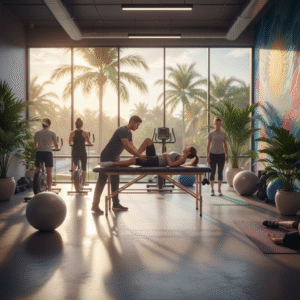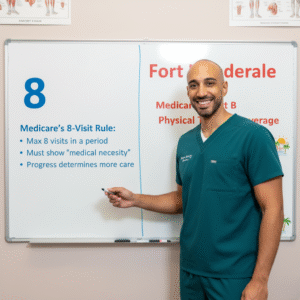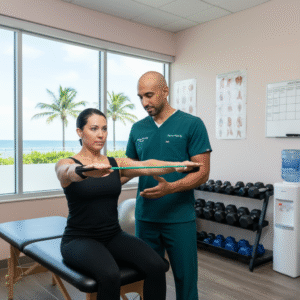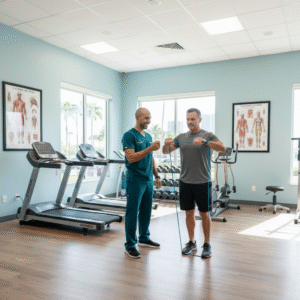Introduction
If you’ve ever had a sports injury, surgery, or chronic pain, chances are someone recommended physical therapy (PT). But does physical therapy help, or is it just a few stretches you could do at home?
Let’s break down what physical therapy is, how it works, and why millions of people see real results, often avoiding surgery and reducing the need for pain medications.
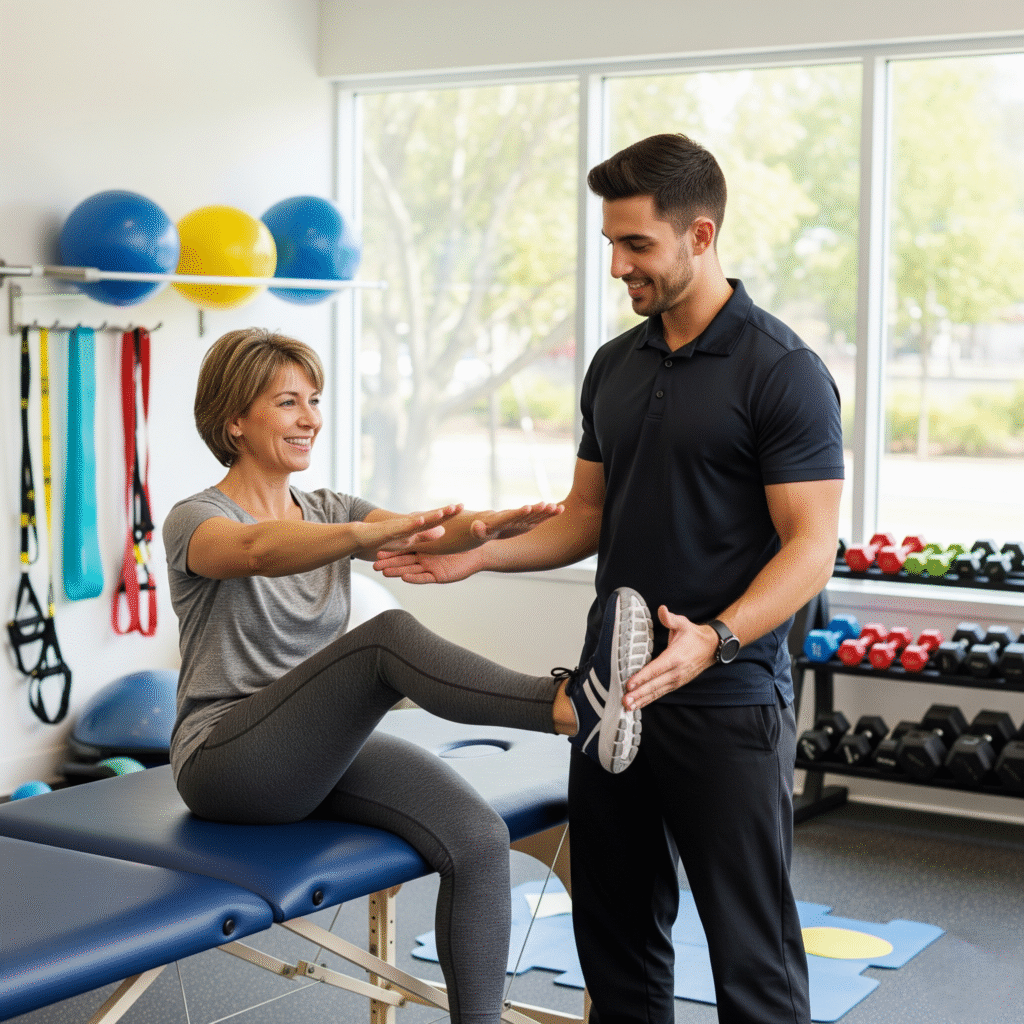
What Is Physical Therapy?
Physical therapy is a science-backed healthcare specialty focused on:
- Reducing pain
- Restoring mobility
- Improving strength and flexibility
- Preventing further injury
PT isn’t just exercise. It’s a personalized approach, combining:
- Manual therapy (hands-on techniques)
- Targeted exercises
- Education about posture and movement
- Use of tools like ultrasound, heat, and electrical stimulation
How Does Physical Therapy Help?
1. Speeds Up Recovery After Injury or Surgery
Whether it’s a torn ligament, hip replacement, or sprained ankle:
- PT promotes circulation to injured tissues
- Reduces scar tissue stiffness
- Restores joint movement safely and gradually
Many surgeons now recommend starting PT within days after surgery to improve recovery speed and long-term outcomes.
2. Reduces or Eliminates Pain Naturally
Physical therapists use:
- Joint mobilization and soft tissue massage
- Therapeutic exercises
- Heat, cold, and electrical stimulation
These methods help reduce pain without relying on medications, lowering the risk of dependency.
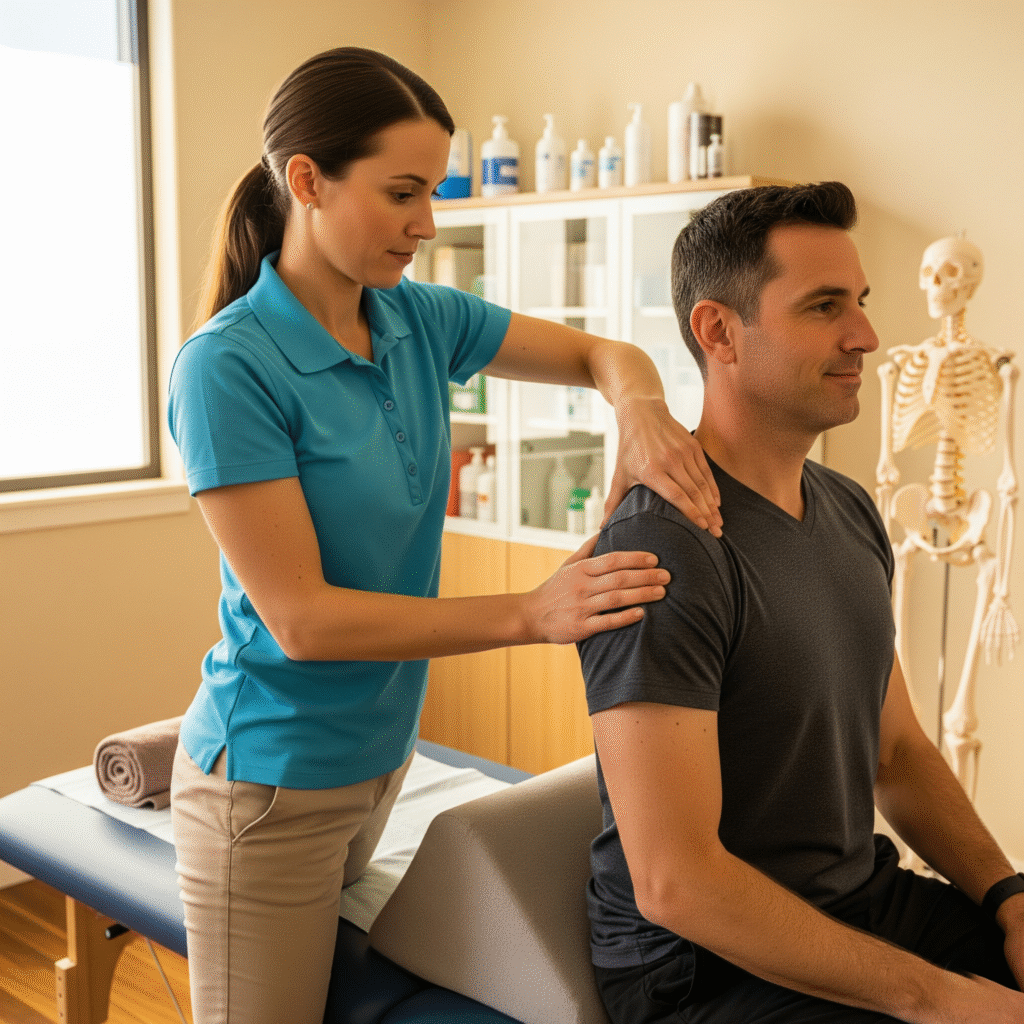
3. Prevents Future Injuries
PT doesn’t just treat the symptoms; it corrects the cause:
- Identifies muscle imbalances and posture problems
- Improves strength and flexibility in weak areas
- Educates patients on safe movement and ergonomics
This helps athletes, workers, and older adults stay active and avoid repeat injuries.
4. Restores Mobility and Independence
After a stroke, surgery, or long illness, daily tasks like climbing stairs, dressing, or walking can feel impossible.
Physical therapists help patients:
- Regain strength and coordination
- Learn to use assistive devices safely
- Build confidence to move independently again
Common Conditions Helped by Physical Therapy
Back and neck pain
Sports injuries (sprains, strains, tendonitis)
Post-surgical rehabilitation
Arthritis and joint stiffness
Balance and fall prevention for older adults
Stroke or neurological conditions
Chronic pain and fibromyalgia
Real Success Stories
- Athletes return to play faster with guided rehab
- Office workers overcome chronic neck pain with posture training
- Older adults reduce fall risk with balance exercises
- Post-surgery patients regain strength and range of motion more quickly
These aren’t miracles, they’re outcomes based on science and consistency.
What Makes Physical Therapy Different?
Unlike a general exercise routine:
- PT is based on an individual assessment of your body, lifestyle, and goals
- Progress is tracked, and programs are adjusted as you improve
- Education helps you understand why certain movements matter
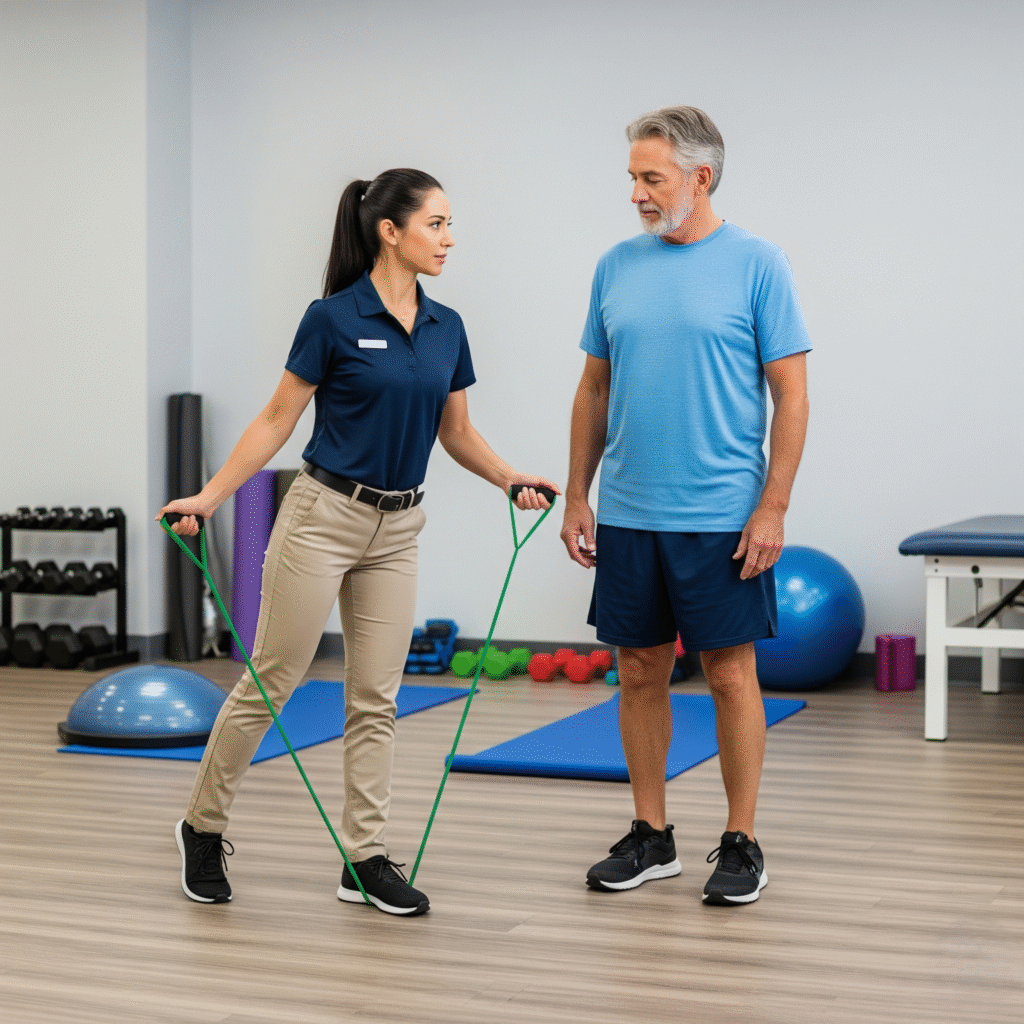
Is Physical Therapy Worth It?
While some people see PT as time-consuming, the benefits include:
- Avoiding surgery or shortening recovery time if surgery is unavoidable
- Lasting relief from pain instead of temporary fixes
- Better overall fitness, posture, and confidence in movement
For many, these benefits far outweigh the investment of time and cost.
Tips to Get the Most from Physical Therapy
Communicate openly about pain and progress
Do your home exercises consistently
Ask questions to understand your treatment plan
Set realistic, measurable goals with your therapist
Consistency and teamwork between you and your therapist lead to better results.
When to Consider Physical Therapy
- After a fall, accident, or surgery
- If pain or stiffness limits daily activities
- For chronic pain that hasn’t improved with rest
- To improve balance, posture, or athletic performance
Early PT often means faster recovery and fewer complications.
Conclusion
So, does physical therapy help? Absolutely.
Backed by research and personalized to each patient, PT offers natural, long-term solutions for pain, mobility issues, and injury prevention, without the risks of surgery or medication.
If you’re struggling with pain or limited movement, consider seeing a licensed physical therapist. It could be your first step toward lasting recovery and a healthier, more active life.



